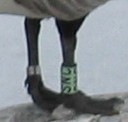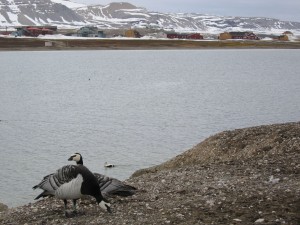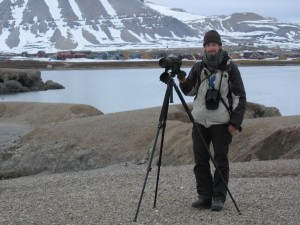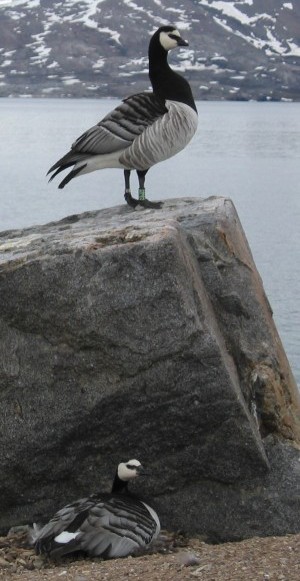 |
A personal photo report from
Maarten Loonen |
||||
| |||||
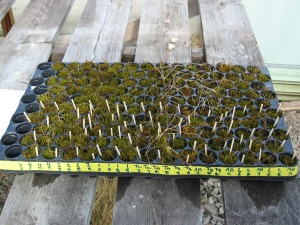 |
Measuring plants We are also doing a grass experiment to study the effect of grazing on future production of the grasses. We have three comparable trays with grass shoots placed at different ambient temperatures. Each tray contains 14 groups of ten shoots, of which half will be clipped each week in July. The 14 groups are 7 pairs from the same location, but for each pair one from an exclosure and one from the grazed environment.We test the hypothesis, that grazed shoots store less reserves in their roots. In this way, their reserves will be depleted over years and production will decrease. In this experiment, we can easily measure underground grass biomass. The moss is natural substrate, but also a competitor for nutrients. |
|
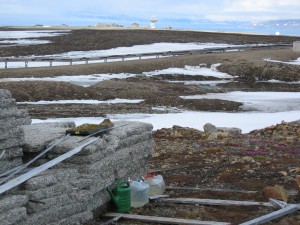 |
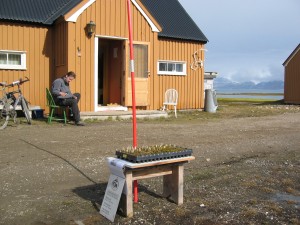 |
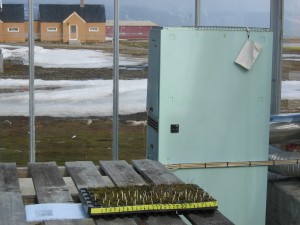 |
 |
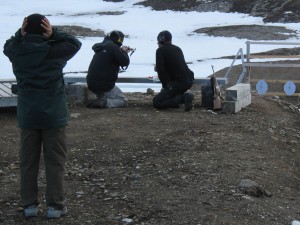 |
Polar bear protection Every year, all persons visiting the Netherlands Arctic Field Station have to take a special "polar bear protection" course. The ultimate defense against an attacking polar bear is a weapon (.308 Winchester). However, this weapon can be at least as dangerous as the bear. The course is paying attention to the behaviour of polar bears, the maintenance and safety with the gun, and finally there is a practice shooting at the shooting range.On this picture, you see colleguas from South-Korea with whom we did the course. Apart from the weapon, we carry always flares. We hope that we never have to use the weapon. |
|
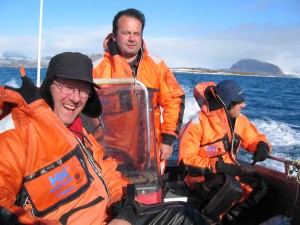 |
Eider studies A French team from Strasbourg is studying immunocompetence in eider ducks. They take us with their boat to the breeding islands. From left to right you see Maarten Loonen, Alain, Thiery, Luis and Sophie. |
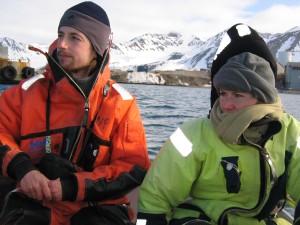 |
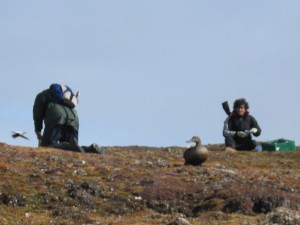 |
On these pictures, you see them working on the island of Storholmen. They are marking nests of eiders
and will catch them at different times during the incubation period to test if the speed at which the immune system
reacts to a challenge is changing during fastening. On the right photo, they are attacked by a Great skua, who is protecting his nest. |
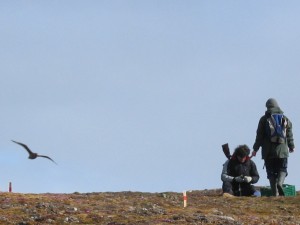 |
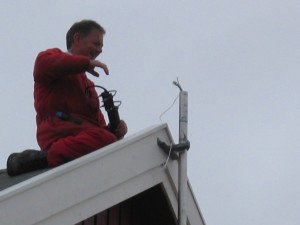 |
British colleagues At the British station, the first team of the year is servicing the equipment. Nick Cox is repairing the antenna for contacting his field radios. Since 1978, he has been working here in summer, first as a boatman, later as station manager.Mark Clilverd has made a low frequency receiver station and relates the logged data to global change events related to e.g. the sun activity. |
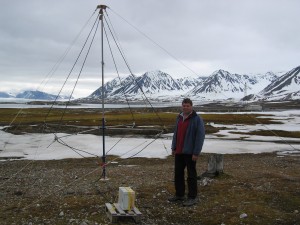 |
 |
| A tourist boat is visiting the town.
This year there are 134 boats visiting with a record of almost 4000 people visiting in one weekend. Unfortunately I have no pictures from Anouk Piquet and Niek, from the marine biology department of the University of Groningen. They are staying in the German station and study micro algea and interactions with bacteria and UV. I also miss a picture from a Norwegian military vessel,who visited town with an international delegation. The delegation included two high officials of the ministery of Defense of the Netherlands. Departing from Ny-┼lesund, this was the view of the town from the airplane. |
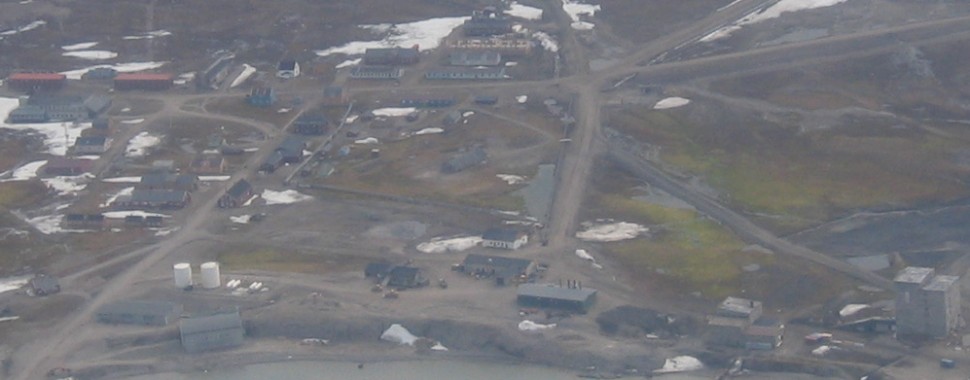 |
| NEXT | next report on fieldwork in Ny-┼lesund |
| PREVIOUS | previous report on fieldwork in Ny-┼lesund: 30 June 2004 |
| INDEX | index to all reports on fieldwork in Ny-┼lesund |
|
